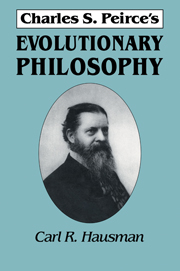Summary
This book has two major objectives: first, to offer an introduction for persons beginning the study of Peirce and, second, to address some of the more complex issues and problematic aspects of his thought on the assumption that these issues can be understood in terms of an overarching, coherent philosophical view – what Peirce aimed at as an architectonic. I am not concerned with criticizing Peirce's ideas, although occasionally my comments raise questions that could be pursued in terms of possible criticisms and suggested answers. I refrain from criticism primarily because I do not think this task is appropriate in an interpretive account. In addition, Peirce's way of presenting his thought seems to have been more hypothetical than categorical, continually exhibiting a commitment to fallibilism. Criticism would be proper only if one were intent on moving beyond his thought, perhaps in order to launch one's own hypotheses. There is a sense in which this latter kind of consideration may enter into what I attempt in this book. To some extent my interpretation of Peirce's aims, particularly with respect to his metaphysics, inevitably flows from certain conceptions I have about what he ought to have meant in the context of his broader, long-range perspectives.
The specific interpretations I offer were initiated more than ten years ago while I was conducting seminars on Peirce. After reflecting on the conclusions I had drawn in trying to help students read and discuss Peirce intelligently, I felt the urge to bring my conclusions and the reasons behind them into a single, sustained discussion. This concern was related to my hope to suggest to students a coherent picture of Peirce's complex and sometimes apparently conflicting views.
- Type
- Chapter
- Information
- Charles S. Peirce's Evolutionary Philosophy , pp. vii - xPublisher: Cambridge University PressPrint publication year: 1993

